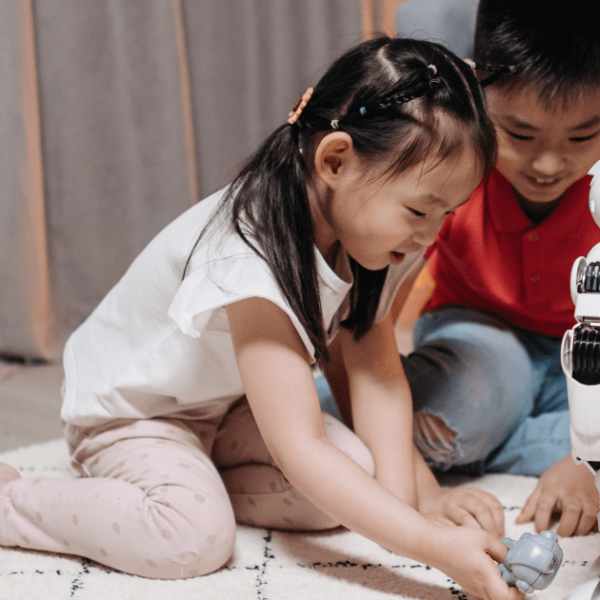How can the TEAL model benefit the social sector?

How can the TEAL model benefit the social sector?

The TEAL model represents a break from classical internal organizational models of entities, with a special emphasis on the people who are part of them. What benefits could its implementation have in the social sector?
One area where we can apply innovation in the social sector is in the internal organizational model of entities and organizations. Frédéric Laloux (Belgium, 1973) published the book Reinventing Organizations in 2014, where he presents the TEAL model, a new perspective on business organization that breaks with classical models and aims to put people at the center of organizations. Below, we will explore what the TEAL model is and what benefits it can bring to the social sector.
Organizational Paradigms: Models Prior to TEAL
To explain what the TEAL model entails, we need to understand where we start. Laloux traces the evolution of organizational models and identifies different types according to their characteristics and advancements, each associated with a different color. From oldest to most recent, there are five:
a. Red. This stage is often associated with environments where strong direction and control are necessary to maintain order, and where power dynamics are clear and manifest. It can be observed in authoritarian regimes, religious sects, or highly competitive sports teams.
b. Amber. In this case, roles are well defined and stable, although they allow some movement on the scale. The organization is structured around a hierarchical pyramid, and control is exercised from top to bottom. The perspective is long-term with stable processes that usually repeat past patterns. Examples include the military, the Catholic Church, and governmental organizations.
c. Orange. This approach introduces innovation for the first time, incorporates accountability, and is based on merits. The main objective is to overcome competition and achieve profits and growth. Management is done through objectives that require control and prediction. Banks and many companies follow this organizational model.
d. Green. Culture and empowerment are at the center of this model, with the aim of boosting employee motivation. The organization’s purpose is articulated around interest groups, not just shareholders. A current example is non-profit organizations.
e. Teal. The last type, and the most recent, replaces the hierarchical pyramid with self-management. Organizations function as “living” entities oriented towards fulfilling their purpose. Thus, they are based on three principles that we will examine below: self-management, wholeness, and evolutionary purpose. Some organizations around the world are already beginning to implement this model.
The TEAL Model: Self-Management, Wholeness, and Evolutionary Purpose
As we have mentioned, the TEAL model is based on three key pillars that serve as a guide for organizations wishing to adopt this system:
a. Self-Management. This trait represents a break with the hierarchy that characterizes most organizations. The main objective is to replace traditional methods based on vertical communication and hierarchical structures with autonomous work groups. This does not mean that organigrams with differentiated positions disappear, but when working, decisions are made without hierarchies. In this way, everyone feels more involved in the goals and strategies. Through regular or spontaneous meetings, different decisions made by each work group are shared. These groups are also flexible and adapt to the needs of projects and contexts. Transparency, conflict management, and a sense of belonging are some characteristics of this self-management.
b. Wholeness. According to Laloux, companies require their workers to hide feelings of doubt or vulnerability and instead always show determination and strength through a “professional mask.” This approach questions the classic barrier between personal and professional life with the aim of creating spaces where people can express themselves fully and thus develop their full potential. It is key at this point to ensure that workers feel useful and have opportunities for fulfillment.
c. Evolutionary Purpose. The third pillar of the TEAL model is based on conceiving the organization as an organism that has its own life and sense of direction. Therefore, instead of trying to predict and control the future, the focus is on listening to its purpose within society. The goal is for the organization’s mission, values, and vision not to be based on the leaders’ interests, but to be aspects shared by all members. Additionally, this perspective also seeks to ensure that entities do not focus on rivalry with other organizations but place their purpose at the center.
The TEAL Model and the Social Sector
The TEAL model is particularly interesting and innovative in the social sector, given its community-oriented nature. However, there is not just one way to apply the model, as it will also depend on the uniqueness of each entity. Some of the benefits we can find are:
a. Increased Autonomy. Self-management allows decisions to be made more efficiently and quickly, as the people working on each project have more autonomy in their area of responsibility. This way, the organization is more flexible to changes and situations that require a quick response. This is useful in the field of social services and direct user care.
b. Motivation and Engagement. Sharing a vision and working towards the same purpose fosters commitment from all members of the organization, regardless of their area, and increases motivation and a sense of belonging.
c. Greater Initiative. Fostering a comfortable and participatory space helps reduce the fear of failure and increases self-confidence. Thus, workers show greater initiative in proposing ideas and making decisions.
d. Fostering Creativity. In relation to the previous point, the greater initiative and involvement of professionals encourages a more fluid exchange of ideas. Consequently, it creates an optimal space for the emergence of creativity.
e. Responsibility. Flattening the organizational chart allows everyone to make decisions. Thus, this autonomy increases the sense of responsibility in responding to the agreed-upon agreements.
In conclusion, the application of the TEAL model can generate numerous advantages in the social sector thanks to its emphasis on self-management, wholeness, and evolutionary purpose. On one hand, autonomy and flexibility in decision-making improve efficiency and adaptability in providing social services. On the other hand, creating a comfortable and participatory space fosters motivation, initiative, and creativity among workers, while increasing their sense of responsibility. All these characteristics make the TEAL model particularly interesting for social sector organizations looking to innovate and improve their internal structure to offer better services to the community.
References
Amurrio Gónzalez de Langarica, Í. (2019). Nuevos modelos organizativos de los recursos humanos en la empresa. Addi. https://addi.ehu.es/handle/10810/37110
Clos, I. (2020, 10 desembre). Organizaciones Teal: 50 prácticas revolucionarias que cambiarán tu futuro. Sociedad de la Innovación. https://www.sociedaddelainnovacion.es/50-practicas-organizativas-revolucionarias-cambiaran-futuro-organizacion-basado-modelo-teal/
De Hijas, P. M. (2023, 19 agost). Laloux, las organizaciones TEAL. Emergentes. https://emergentes.org/laloux-las-organizaciones-teal/
Great Place to Work. (2023, 25 abril). Organizaciones TEAL ¿Qué son? ¿Qué ventajas tienen?. Great Place To Work Spain. https://greatplacetowork.es/organizaciones-teal/
Organizaciones TEAL: ¿cómo reinventan la gestión y cuáles son sus ventajas? (s. f.). Iberdrola. https://www.iberdrola.com/talento/organizaciones-teal
Organizaciones Teal: qué son, qué ventajas ofrecen. (s. f.). https://thepower.education/blog/organizaciones-teal
Ortiz de Zárate Hors, María Eugenia (2019). Modelos organizativos evolutivos – Teal para startup social: estudios de caso. Tesis (Master), E.T.S.I. Industriales (UPM). https://oa.upm.es/65570/
Pablo, S. A. J. (2022, 10 març). Implementación del modelo Teal evolutivo para el desarrollo de la felicidad organizacional. https://repository.unimilitar.edu.co/handle/10654/43633
Romero, A. M., López, M. M., & Bravo, A. M. (2018). La transición hacia organizaciones evolutivas Teal. Dialnet. https://dialnet.unirioja.es/servlet/articulo?codigo=6535708
Articles







